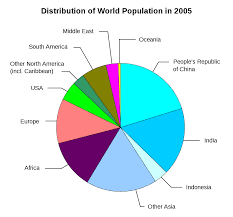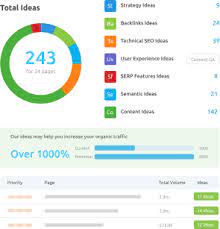The Importance of Statistics in Today’s World
Statistics play a crucial role in various aspects of our lives, from scientific research to business decision-making. By analysing data and drawing meaningful insights, statistics help us make informed choices and understand the world around us better.
Scientific Research
In the realm of scientific research, statistics are essential for designing experiments, analysing results, and drawing conclusions. Researchers use statistical methods to determine the significance of their findings and make reliable predictions based on data.
Business Decision-Making
In the business world, statistics are invaluable for market analysis, forecasting trends, and measuring performance. Businesses rely on statistical data to identify opportunities for growth, assess risks, and make strategic decisions that drive success.
Public Policy and Governance
Statistics also play a vital role in shaping public policy and governance. Governments use statistical information to allocate resources effectively, monitor social trends, and evaluate the impact of policies on society. Data-driven decision-making is crucial for creating policies that address the needs of the population.
Evidence-Based Medicine
In healthcare, statistics are used to evaluate treatment outcomes, assess the effectiveness of interventions, and conduct clinical trials. By analysing medical data statistically, healthcare professionals can improve patient care and advance medical research.
Data Security and Privacy
With the increasing reliance on digital technologies, statistics are essential for ensuring data security and protecting privacy. Statistical methods help detect anomalies in data patterns, identify potential security threats, and safeguard sensitive information from breaches.
Conclusion
In conclusion, statistics are a powerful tool that drives progress in various fields. By harnessing the power of data analysis and statistical methods, we can make informed decisions, solve complex problems, and shape a better future for all. Embracing statistics is key to navigating the complexities of today’s world with confidence.
Seven Essential Tips for Effective Statistical Analysis
- Ensure your data is clean and free from errors before conducting any statistical analysis.
- Choose the appropriate statistical method based on the type of data you have (e.g. categorical, numerical).
- Clearly define your research question or hypothesis before starting your analysis.
- Visualise your data using graphs or charts to better understand patterns and relationships.
- Check assumptions such as normality and homoscedasticity before applying certain statistical tests.
- Interpret results in the context of your study and avoid making conclusions based solely on p-values.
- Consider consulting with a statistician for complex analyses or interpretation of results.
Ensure your data is clean and free from errors before conducting any statistical analysis.
Before embarking on any statistical analysis, it is imperative to ensure that your data is clean and devoid of errors. The accuracy and reliability of the results heavily depend on the quality of the data input. By meticulously checking for inconsistencies, outliers, missing values, and other discrepancies in the dataset, researchers can mitigate the risk of biased or misleading conclusions. A thorough data cleaning process sets a solid foundation for robust statistical analysis, ultimately leading to more accurate insights and informed decision-making.
Choose the appropriate statistical method based on the type of data you have (e.g. categorical, numerical).
When conducting statistical analysis, it is essential to choose the appropriate method based on the type of data you have. Whether your data is categorical or numerical, selecting the right statistical approach ensures accurate and meaningful results. Categorical data, such as gender or product categories, may require different methods like chi-square tests or logistic regression, while numerical data, such as measurements or scores, may be best analysed using techniques like t-tests or correlation analysis. By understanding the nature of your data and selecting the correct statistical method, you can effectively interpret and draw valid conclusions from your analyses.
Clearly define your research question or hypothesis before starting your analysis.
It is crucial to clearly define your research question or hypothesis before embarking on any statistical analysis. By establishing a clear objective at the outset, you can ensure that your data collection and analytical methods are aligned with the specific goals of your study. A well-defined research question or hypothesis provides focus and direction, guiding the choice of appropriate statistical techniques and helping to draw meaningful conclusions from the data. Clarity in defining your research aim is fundamental to conducting a robust and insightful analysis that yields valuable insights and contributes to the advancement of knowledge in your field.
Visualise your data using graphs or charts to better understand patterns and relationships.
Visualising data through graphs or charts is a valuable technique in statistical analysis as it enables us to gain deeper insights into patterns and relationships within the data. By representing numerical information visually, we can easily identify trends, outliers, and correlations that may not be apparent from raw data alone. Graphs and charts provide a clear and intuitive way to interpret complex datasets, making it easier to communicate findings and make informed decisions based on the visual representation of the data.
Check assumptions such as normality and homoscedasticity before applying certain statistical tests.
Before applying certain statistical tests, it is crucial to check assumptions such as normality and homoscedasticity. Normality refers to the distribution of data points being approximately normal, while homoscedasticity relates to the equality of variances across different groups or conditions. By verifying these assumptions, researchers ensure the validity and reliability of their statistical analyses. Failing to meet these assumptions can lead to inaccurate results and conclusions. Therefore, it is essential to thoroughly assess these criteria before conducting statistical tests to maintain the integrity of the research findings.
Interpret results in the context of your study and avoid making conclusions based solely on p-values.
When interpreting results in a study, it is crucial to consider the context in which the data was collected and analysed. While p-values are commonly used to determine statistical significance, it is important to avoid solely relying on them to draw conclusions. Instead, researchers should look at the broader picture, taking into account factors such as sample size, effect size, and the practical significance of the findings. By considering these aspects along with p-values, researchers can ensure that their conclusions are robust and meaningful within the specific context of their study.
Consider consulting with a statistician for complex analyses or interpretation of results.
When faced with complex analyses or the interpretation of results, it is advisable to consider consulting with a statistician. Statisticians are experts in handling and making sense of intricate data sets, ensuring accurate and reliable conclusions are drawn. Their expertise can provide valuable insights, enhance the quality of research outcomes, and offer a deeper understanding of statistical methodologies. Consulting with a statistician can significantly benefit decision-making processes and lead to more informed and robust conclusions in challenging analytical scenarios.






